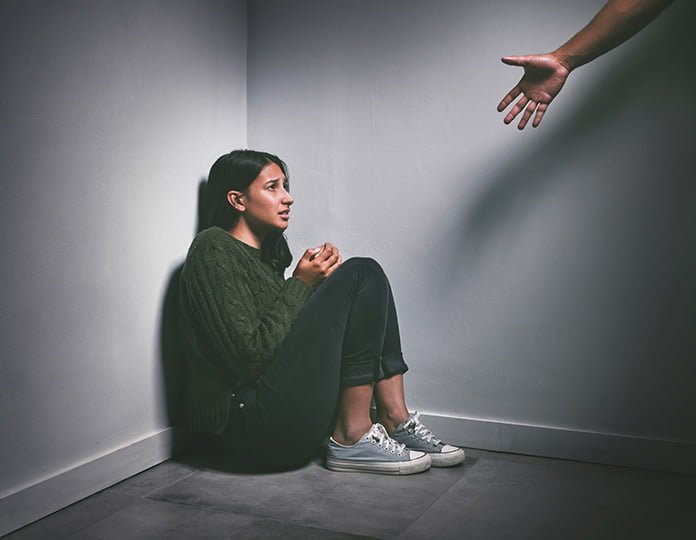Some of the period’s loudest authorities argued that the time was so unlike the present that it was the best of times, the worst of times, the age of wisdom, the age of foolishness, the epoch of belief, the epoch of incredulity, the season of Light, the season of Darkness, the spring of hope, the winter of despair, with everything before us and nothing before us. They also claimed that everyone was either heading directly to Heaven or the opposite way and that the time should only be seen in the highest possible light.
Charles Dickens: A Tale of Two Cities
The mental health scene in India at the dawn of the twenty-first century is a bewildering mosaic of immense impoverishment, asymmetrical distribution of scarce resources, islands of relative prosperity intermixed with vast areas of deprivation, conflicting interests and the apparent apathy of governments and the governed alike. In the context of the huge and perhaps unsustainable levels of over-population, the problems appear to be insoluble.
If we’re going to survive, we need to find a solution. This calls for courage, vision and a vibrant spirit of innovation, unburdened with the obsolescent shibboleths of psychiatric mythology. We will have to get off the beaten track, and embark upon this journey without a road map to help us along. We will have to invent solutions. Do we have the technical skills required to achieve this goal? Do we have the wisdom to choose the right path? Can we now consider the importance of Mental Health? Can we step out of own shackles of stigmatised beliefs. Understand that the essence of Mental health is as pivotal as physiological well-being of an individual?
Burden of mental disorders had risen over last few decades. WHO claiming that every 5th person in India is suffering from a mental illness caught under the cobwebs. Where they are not aware about it’s existence or suffer under the shed of stigma associated with Mental illness.

Mental health is a state of well-being in which the individual realises his or her own abilities. Also can cope with the normal stresses of life and can work productively and is able to make a contribution to his or her community. WHO estimated that globally over 450 million people suffer from mental disorders. Currently, mental and behavioural disorders account for about 12 percent of the global burden of diseases. This is likely to increase to 15 percent by 2020. Major proportions of mental disorders come from low and middle income countries.
There are lacunae in psychiatric epidemiology due to intricacy related to defining a case, sampling methodology, underreporting, stigma, lack of adequate funding and trained manpower and low priority of mental health in the health policy.
A study conducted in Pune in 2012 reported the overall lifetime prevalence of mental disorders to be nearly 5 percent. Males were shown to be at greater risk, with depression being the main contributing factor, followed by drug addiction and panic disorders. These findings were similar to results of the meta-analysis. Which estimated the prevalence of mental disorders to be 5.8 percent among the Indian population. In 2010, a study conducted in NIMHANS, Bangalore reported that the burden of mental and behavioural disorders ranged from 9.5 to 102 per 1000 population. Reason behind such a wide range of prevalence could be that few studies had focused on isolated settings.
Another study among elderly done in South India in 2009 found the prevalence of depression to be 12.7 percent. According to research, older people with dementia, generalised anxiety disorder, alcohol dependency, and bipolar illness have a high frequency of mental disorders—up to 26.7 percent. A different research done in 2005 in an urban community of Kerala indicated that 33.6 per 1000 people had dementia. Alzheimer’s disease accounted for 54% of dementia cases, while vascular dementia accounted for 39% of cases. In 2000, a review of epidemiological studies estimated that the prevalence of mental disorders in India was 70.5 per 1000 in rural and 73 per 1000 in the urban population.
All these studies represent figures and facts that are objective in nature. But one can recognise the social hardships of Mental illness too. Despite the fact that the prevalence rates of mental disease have been sharply rising every year. The proportion of mental illness in government health policy has remained same. Only one day, recognised as Mental Health Day, has been designated as the focus of awareness campaigns.
Despite organizational-level interventions, the stigma associated with mental health still permeates the streets of Indian villages. Spiritual healers are occasionally the only acceptable option for folks who want to drive out their inner demons. Unfortunately, many companies place little priority on mental health. Although many agencies are willing to help, there aren’t enough resources. So people who are in need must turn to social media to express their plight and encourage others to help.

Each person pursues mental health as a route in the current, technology era. Rather than restricting it to the diagnostic categories of ICD and DSM. For those who speak out on issues relevant to their professions, the twenty-first century may provide several opportunities. One could see that the definition of mental illness accommodates a dimension of self-peace which each of us strives to find. It is not surprising that we millennials are realising that a diagnostic label is not mandatory to consult psychiatric sector.
Mental health is increasing it’s horizons with little steps in it’s growth. One can also see how it effects each strata of population. In 1999, a study stated that the prevalence of mental disorders in child and adolescent population was 9.4 percent. Similarly, another study from Bangalore in 2005 documented the burden of mental disorders to be 12.5 percent. The study also showed that there were no significant differences among prevalence rates of mental disorders in urban middle class, and slums and rural areas with annual incidence of 18 per 1000 population. The prevalence of mental disorders among 0-3 yr old children was 13.8 percent, most commonly due to breath holding spells, pica, behavior disorder NOS, expressive language disorder, and mental retardation. The prevalence rate in 4-16 yr old children was 12.0 percent mainly due to enuresis, specific phobia, hyperkinetic disorders, stuttering and oppositional defiant disorder.
Compared with the general population, industrial workers were more predisposed to mental disorders. In 2002, the prevalence rate of mental disorders in the Indian industrial population was estimated to be 14 to 37 percent. On the contrary, western world reported it to be nearly 75 percent. Another study among industrial workers mentioned the lifetime prevalence of mental disorder to be more than 50 percent. Most common associated factor in industrial workers was substance abuse (12.3%).
Besides substance abuse, suicide among young people has emerged as a major public health issue. National crime record bureau, India reported, 27.7 percent increase in the recorded number of suicides between 1995 and 2005 with suicide rate of 10.5 per million. Also a study from Hyderabad stated that nearly 35 percent of suicides occur amongst youth (15–29 years) with rate of 152 per lakh for girls and 69 per lakh for boys. Compared with the suicide rates from high income countries, these rates were four times higher for boys. In 2009, a study revealed that overall 3.9 percent youth reported suicidal behavior. A study conducted in rural areas of south India, in 2010 reported 37% of those who died by suicide had a mental disorder. The two most common reasons were alcohol dependence (16%) and adjustment disorders (15%).
The prevalence rates of mental disorders reported in India are very low compared to studies done in the western world. This is may be due to that Indian epidemiological studies were not able to measure mental disorders adequately. Reasons could vary from the stigmatised beliefs to the lack of support at each level. The reasons could be found within each of us who think it’s all in the mind.

Burden of mental disorders seen by the world is only a tip of iceberg. To promote mental health, there is a need to create such living conditions and environment that support mental health and allow people to adopt and maintain healthy lifestyles. A society that respects and protects basic, civil, political, and cultural rights is needed to be built to promote mental health. National mental health policies should not be solely concerned with mental disorders. Yet it should also recognise and address the broader issues which promote mental health.
This includes education, labour, justice, transport, environment, housing, and health sector. For attaining this, intersect-oral coordination is a mainstream. It is becoming more well acknowledged that many mental diseases have prodromes that begin at such a young age. India needs to aim at improving child development by early childhood interventions like preschool psychosocial activities, nutritional and psycho- social help to give roots for a healthy community. Presently the community is also demanding the skills building programme and child and youth development programme.
To reduce the burden of mental disorders in women, there is need to do socioeconomic empowerment of women. By improving access to education and employment opportunities. Women should be involved in group activities like farmer’s clubs, mahila mandal and adolescent girls’ groups. These group activities will bring people together for social, health and educational reasons as well as income generation activities. Society needs to be free of discrimination and violence. Reducing discrimination against sex, caste, disability and socioeconomic status is an important aspect to reduce mental disorders.
Social support for elderly people needs to be strengthened. More community and day centres for the aged should be developed. Programmes targeting towards indigenous people, migrants and people affected by disasters need to be established.
Programmes to assist ecological improvements might be adopted in schools, and workplace stress reduction initiatives could be introduced. Various organisations across the globe are now largely focusing on mental health. World Health Organization mental health Gap Action Programme aims at scaling up services for mental, neurological and substance use disorders. Since its inception, mental health care has stopped suicides, helped millions of individuals throughout the world overcome depression, schizophrenia, and epilepsy, and enjoy normal lives. This was especially efficient in low and middle income countries having scarce resources.

Another key to reduce mental morbidity is to strengthen the treatment of mental disorders at the level of primary health care. There are multiple interventions needed to prevent the progression of mental disorders from early manifestations to more serious and chronic cases. There is an urgent need of simple, easily available diagnostic test and low cost treatment to provide better primary health care. Psychiatric epidemiologists need to reorient their research in such a way that true burden of mental disorders are estimated at community level.
This would provide true situation of the mental health problem. Secondary prevention must focus on strengthening the ability of primary care services to provide effective treatment.
As there are no known ways to stop severe psychoses and psychoneuroses, primary prevention of mental diseases is difficult. Childhood emotional stability is essential for preventing behavioral issues and adult adjustment issues. People are at a greater risk of getting mental problems if they are under moderate to severe psychosocial stress. Post-traumatic stress disorders and other mental health problems can arise in victims of natural disasters or earthquakes. Major depression, panic disorders, or paranoid illnesses affect a sizable majority of those exposed to such tragedies. Psychiatrists and Psychologists should therefore be active participants in disaster management teams.
We must develop methods to stop the present exodus of highly skilled workers to India due to migration and misplacement. A significant reason for seeking opportunities elsewhere may be the reduced availability of professional posts in the public sector. As the expansion of such jobs is not without its constraints within a developing economy. Clinical psychologists may look to private entrepreneurship. However, the hiatus in the legal and administrative framework needs to be rectified. So as to make the necessary provision for registration and licensing and for insurance coverage.
The Mental Health Act of 1987 notes the addition of a clinical psychologist as a non-official member of the federal and state mental health authorities. Enabling the Indian government to set the proper credentials and experience needed for professional categorization. Centers for the training of such professionals can also be notified. Additionally, the professional body of clinical psychologists can introduce a set of ethical principles and a code of conduct for its members. Procedures for disciplining erring members would be another step towards increased professional responsibility.
Rao and Mehrotra point out that clinical psychologists in India do not like to involve themselves in administrative responsibilities. International literature confirms the diminished appeal that managerial responsibilities hold for clinical psychologists. Contributions to policy formulations, programme development and implementation, training initiatives, etc., are possible within a profession only if there are individuals with sound managerial experience. Without such knowledge, the profession runs the danger of lacking a sense of purpose and suitable development objectives. Managerial vision and skills usually evolve over a period of time through a process of training and participation in such tasks. Clinical psychologists need to consider giving priority to managerial and administrative duties, in order to maintain the leadership function within the profession.
Positive changes occurring at a fairly fast pace lead to the development of a profession. During the second half of the previous century, the pace at which changes occurred in the field of clinical psychology were rather slow. If the issues raised herein bring about changes within the next 15–20 years. It would be in the interest of the field of health in general and that of clinical psychology in particular.
Mainstreaming Mental Health:
Mental health services must become more relevant for Indian cultural needs.
Medicine and psychiatry do not develop in a vacuum, but they develop in a historical social context. Modern science, medicine and psychiatry have all developed during the last few centuries, in a European setting. In the case of psychiatry, the influence of European philosophy is particularly striking. Various psychiatric terms, systems of diagnosis and classifications, and approaches to management, are all based on European philosophical thoughts.

This is not a very comfortable situation for a country like India, with its own rich philosophical heritage. Perhaps, no other civilisation has considered understanding the functions of the human mind. Psychopathology and the management of various mental disorders, the way we have in India. Yet, we continue to blindly follow alien concepts and methods, even though these are often inappropriate in our socio-cultural context. We need to deliberate on these issues and evolve a truly indigenous approach to mental health.
Operational strategies derived from such an approach will accord more closely with ground realties, and particularly in respect of psycho-social therapeutic interventions. This is not a very comfortable situation for a country like India, with its own rich philosophical heritage. Perhaps, no other civilisation has considered understanding the functions of the human mind. Psychopathology and the management of various mental disorders, the way we have in India. But we continue to blindly follow alien concepts and methods, even though these are often inappropriate in our socio-cultural context. We need to deliberate on these issues and evolve a truly indigenous approach to mental health. Operational strategies derived from such an approach will accord more closely with ground realities, besides particularly in respect of psycho-social therapeutic interventions.
As one realises the importance of mental health, it is crucial to place those learnings in the India root. Furthermore, it takes learning from the therapeutic practices placed in the West. One could reap it’s benefits by making the practice more indigenous to fight the stigma of mental illness as an abnormal outsider. As one starts to grasp the job of a psychologist or therapist, they begin to feel the pain in their veins and the blockage in their throat. As one soothes it each day, one can find peace in a home now newly found in a clinic. All together loosely deconstructs the illness as merely a robotic white coat machinery. Which gives medicines and to see the essence of mental illness submerged in calmness. One would be ready to fight with the stigma.
As Indians would embrace mental health as something which should be an individual right. As we would join hands together to fight for the wellness of each mind. That day is not far away, where India would call itself mentally developing country. As one will recognise the psychological dimension of their health, each one of us will take a step ahead for the sufferers who are living under the roofs of abnormality. As we will accept them as one of us and see mental health as only more care for normalcy. We are rapidly approaching the day when we will consider psychiatric procedures as routine and treat these alleged monsters with the greatest caution. The question is, Are we all ready to bring the modern era revolution?












Leave feedback about this